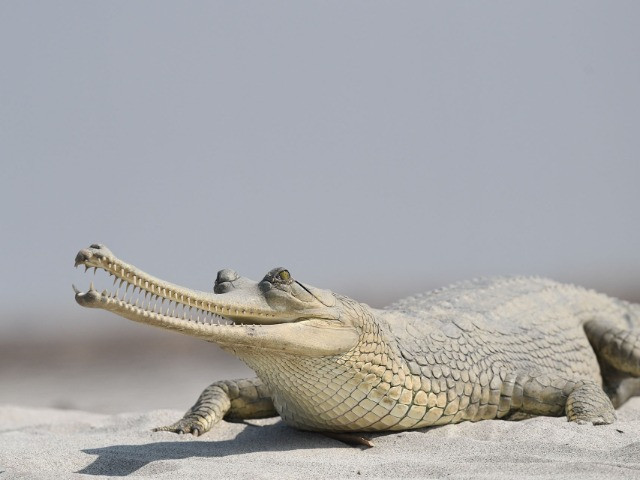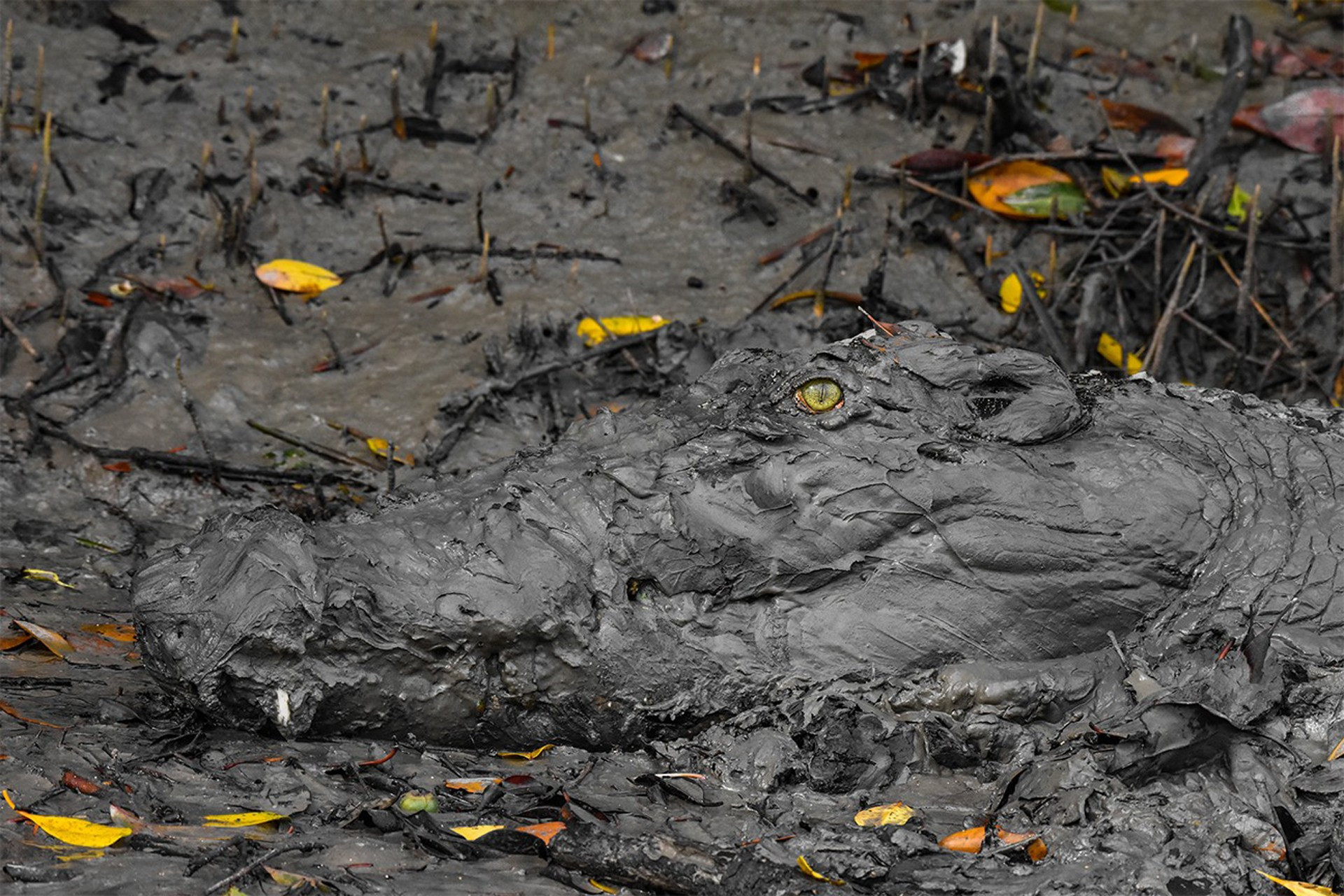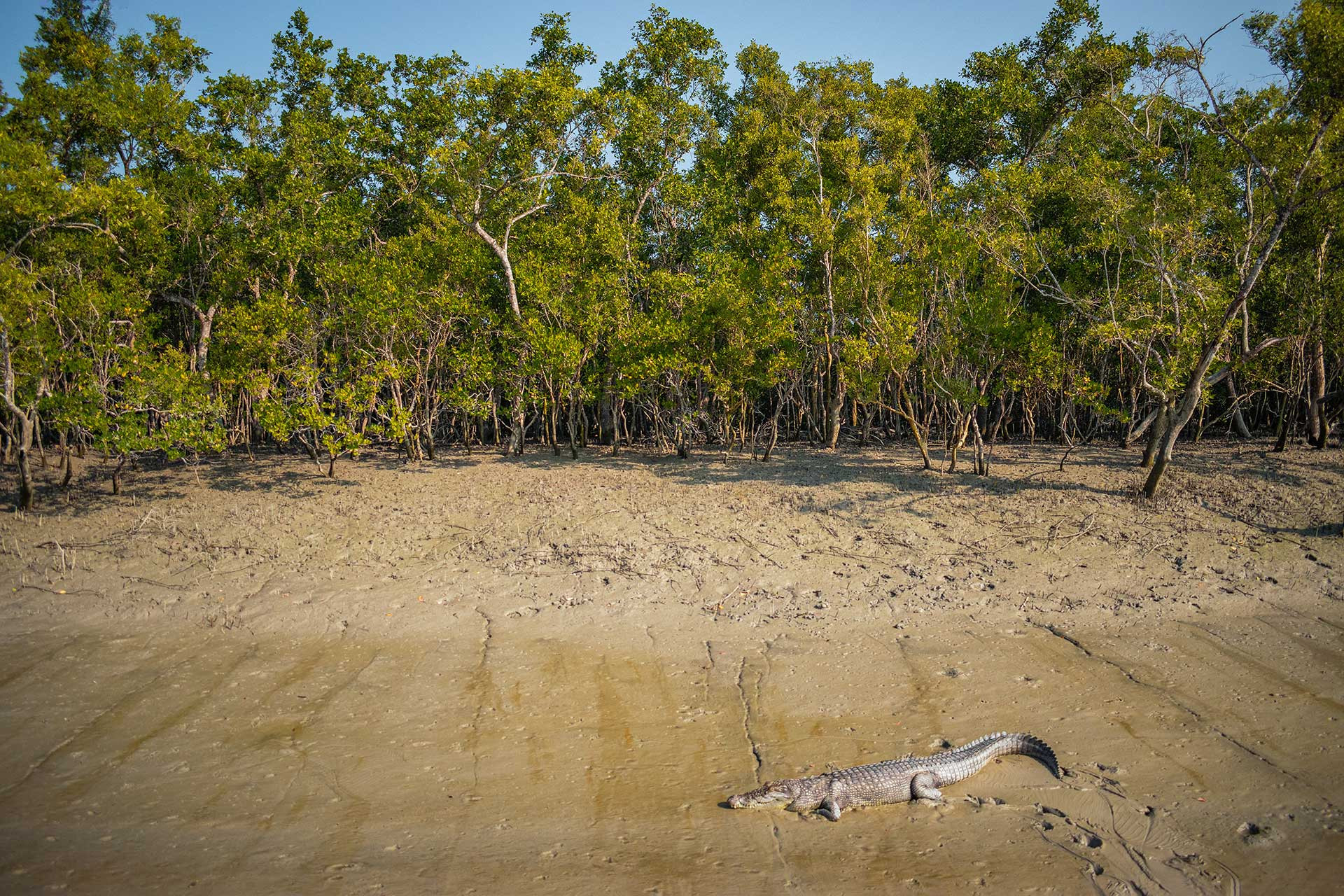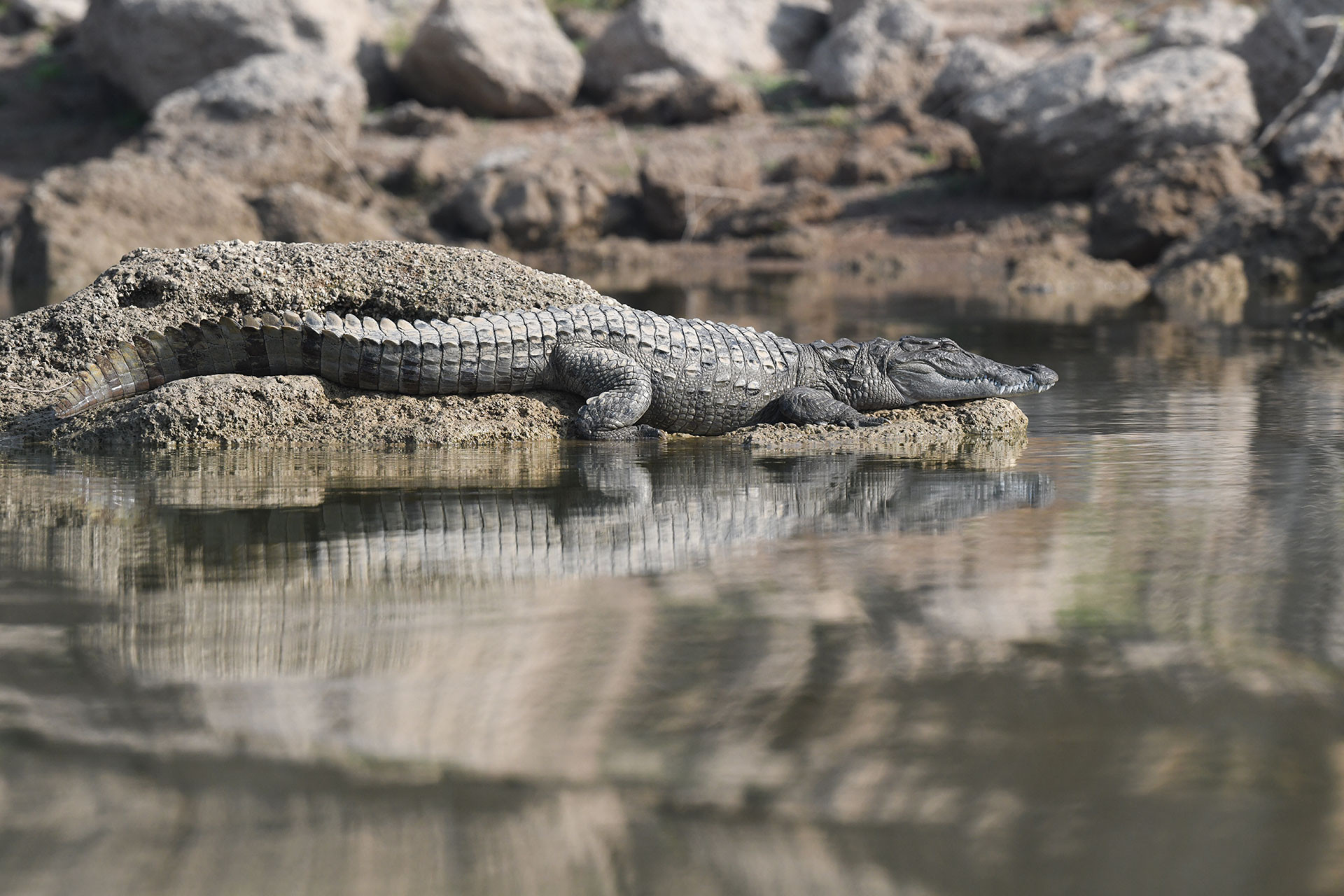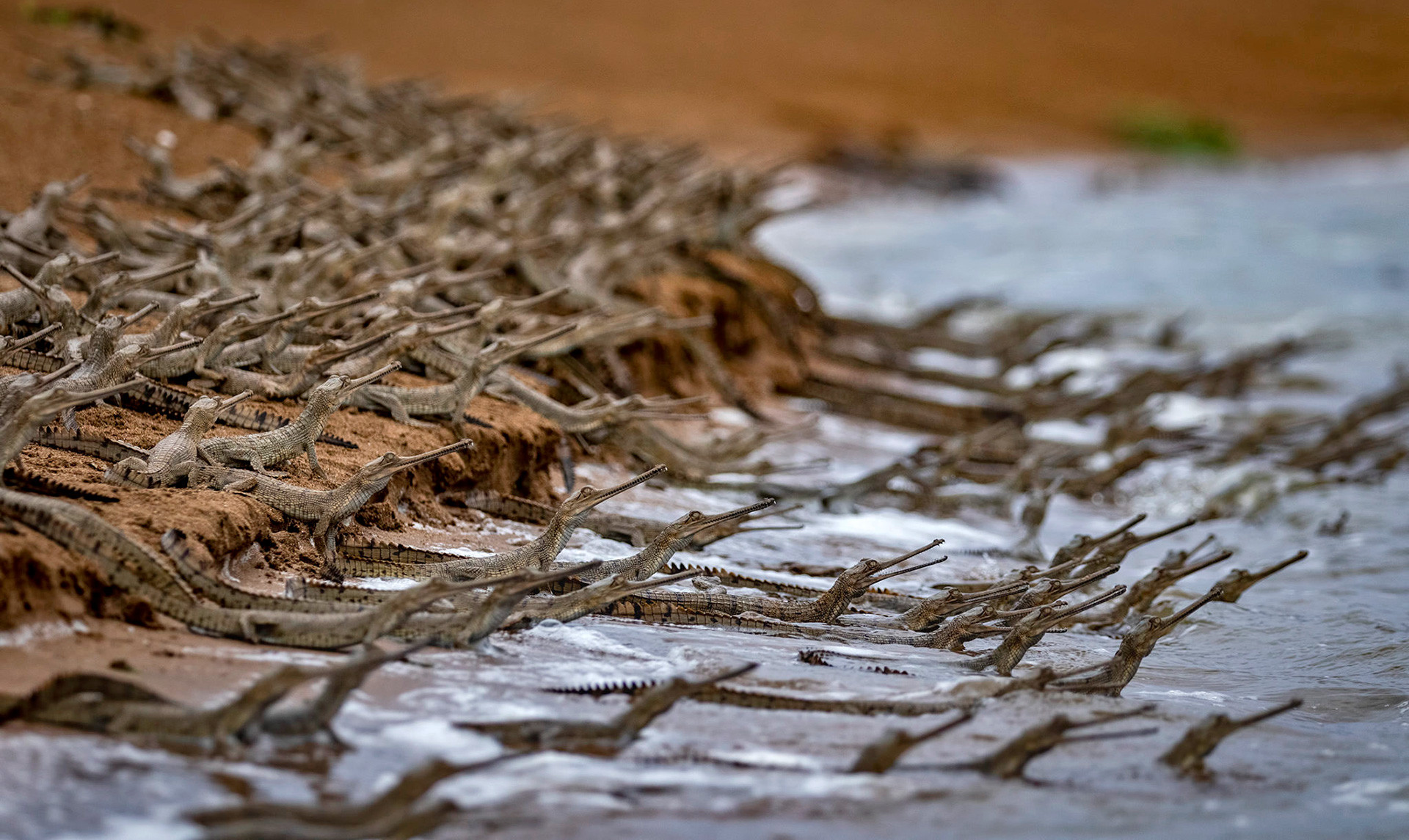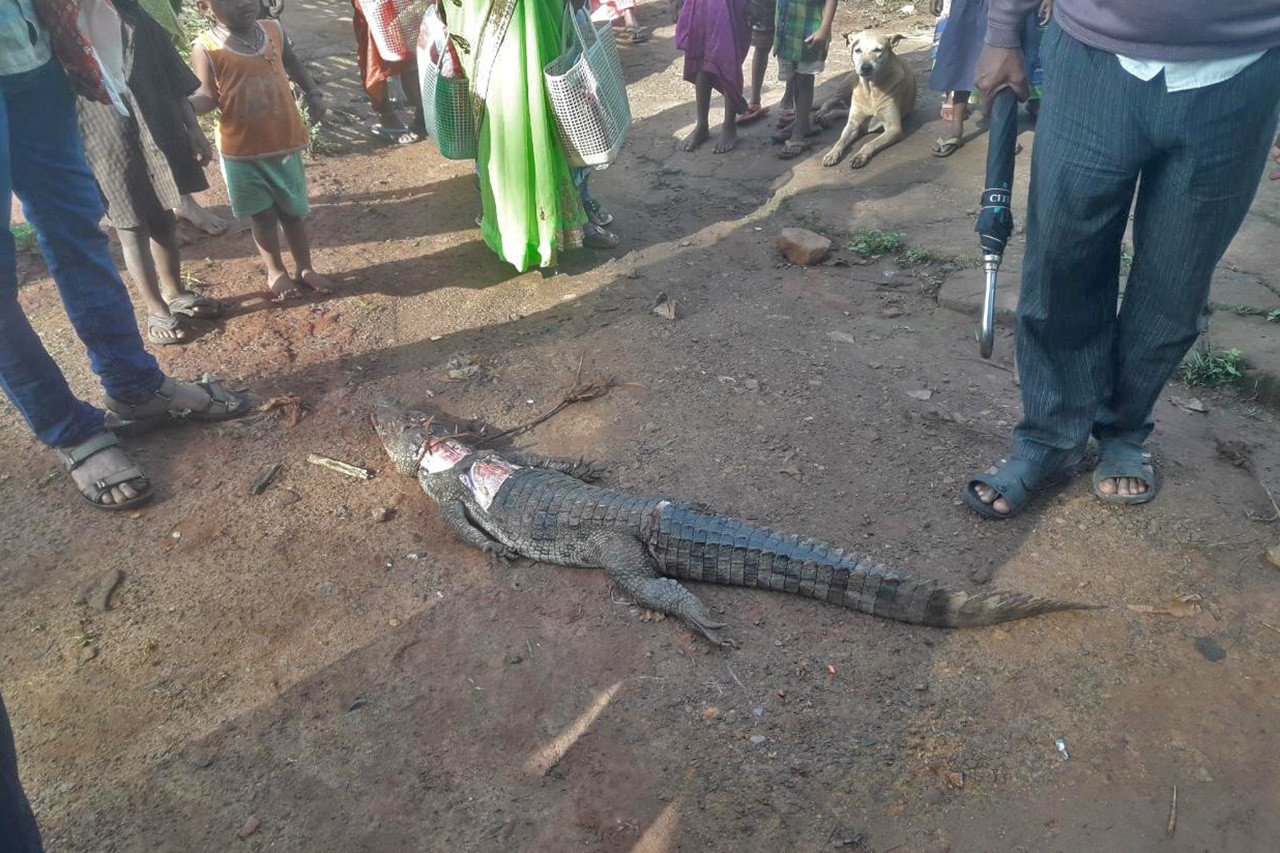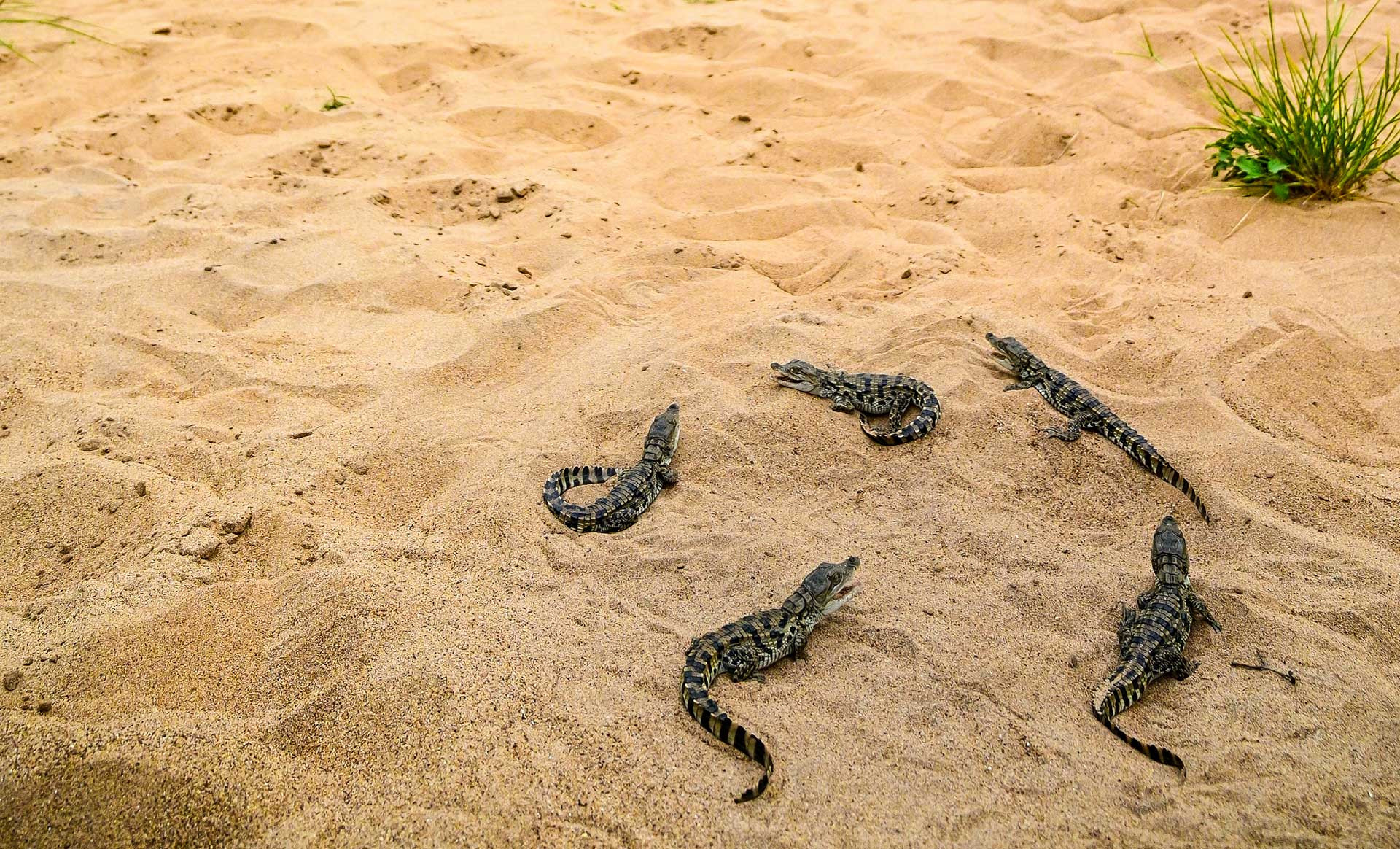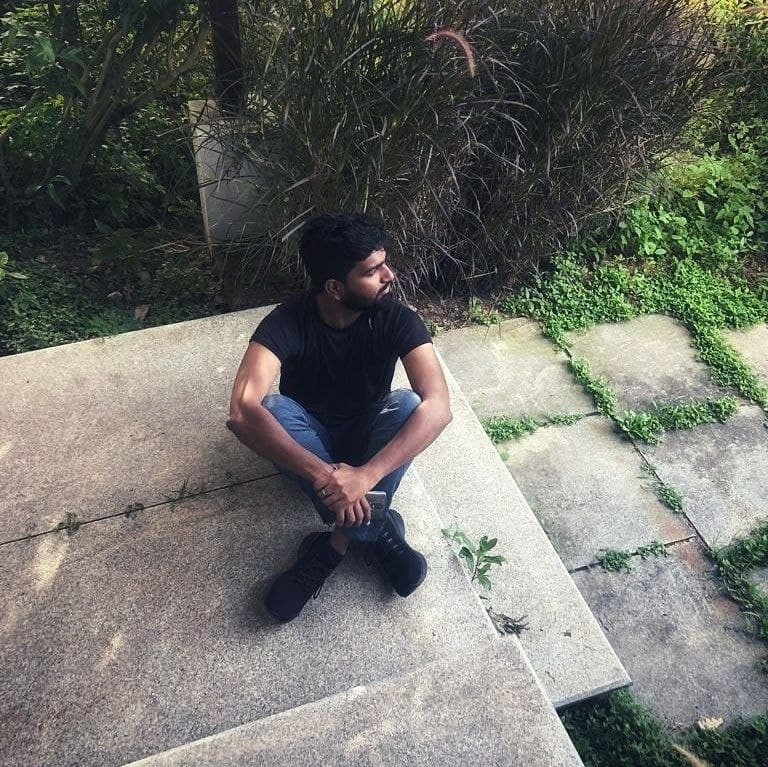Today, in India, crocodiles are a common sight in uncommon spaces. Chilling footage of a massive crocodile strolling down a street in the Kogilabanna village of Karnataka’s Uttara Kannada district went viral on social media last year. If one were to do a quick search on Google, 'crocodile attacks in India' will throw up plenty of stories of fatal human-crocodile conflict incidents from across the nation. But contrary to the public perception, crocodiles remain among the most threatened reptiles on the planet. A first-of-its-kind global assessment of more than 10,000 reptile species revealed that 50 per cent of all crocodile species are at the risk of extinction. The three crocodiles of India, Saltwater Crocodile, Mugger Crocodile and Gharial, are listed as Least Concern, Vulnerable and Critically Endangered on the IUCN Red List of Threatened Species.
Especially with human-crocodile conflict on the rise in the country, it is paramount that we educate ourselves about these predators of our rivers. Find out all you need to know about India’s crocodile species, the numerous threats these reptiles face, reasons for the rise in human-crocodile conflict incidents, the various crocodile conservation initiatives and more.
Estuarine or Saltwater Crocodile (Crocodylus porosus)
IUCN Red List Status: Least Concern
Estuarine or Saltwater Crocodiles are the largest crocodile species on the planet, with unconfirmed reports of individuals that are 8-10m long. They have a relatively large head with a pair of ridges that run down from the eye along the centre of the snout. Adults are generally dark in colour with a lighter tan and dark bands and stripes on the lower flanks. Juveniles are usually a pale tan with black stripes and spots on the body and tail, which fade with age. The species is more aquatic than most crocodiles, capable of swimming at a speed of 12-15mph during short bursts. Saltwater Crocodiles in India are seen along the northeast coast and the Andaman Islands. A large population is present in and around the Bhitarkanika Wildlife Sanctuary in Odisha, where a reintroduction programme saw more than 2300 captive-reared juveniles released between 1977 and 2009. Smaller populations are also seen in the Sunderbans.
Mugger or Marsh Crocodile (Crocodylus palustris)
IUCN Red List Status: Vulnerable
Another member of the Crocodylidae family, the Mugger or Marsh Crocodile is a species largely restricted to the Indian subcontinent. They are found in various freshwater habitats, including rivers, lakes, marshes, irrigation canals and even coastal saltwater lagoons and estuaries. Marsh Crocodiles in India have been reported from over ten states, and the population in the wild is tentatively estimated at 3,000-5,000 adult individuals. Medium-sized crocodiles (max. length of 4-5m) with the broadest snout of any living Crocodylus species, Mugger Crocodiles are hole-nesting species, with egg-laying taking place during the dry season. Adults are grey to brown in colour, and juveniles are a light tan with black cross banding on tail and body. Muggers are also known to take overland treks over large distances.
Gharial (Gavialis gangeticus)
IUCN Red List Status: Critically Endangered
The Gharial derives its name from a bulbous knob-like protuberance on the snout of breeding males that resembles a ghara, which in Hindi means an earthen pot. The bulbous snout makes them the only crocodile species on the planet with a visible difference between males and females. Largely piscivorous, their long, slender snout and rows of sharp teeth make them efficient fish catchers. Adults are dark olive or brownish olive in colour, while the juveniles are greyish brown with five irregular bands on the upper body and nine on the tail. Once a common sight within the subcontinent's riverine ecosystems, local gharial populations have declined by 98 per cent since the 1940s, with fewer than 250 adult gharials remaining in the wild in 2006. Concerted conservation efforts have since borne fruit, with a recent survey by the Wildlife Trust of India (WTI) reporting 1,255 gharials in the Chambal river alone.
You may also like to read
Habitat Loss, Hunting and Fishing
Habitat loss due to anthropogenic factors such as agricultural and industrial expansion and urban development is the primary threat to crocodiles. Crocodiles are also the reptiles most frequently associated with wetlands, which are globally under siege, dubbed wastelands and mercilessly tapped for mining and other industrial purposes. The disruption of thriving crocodile populations through hunting and poaching is another potent threat. Crocodile skins are prized possessions in the black market to produce leather products. Intensive fishing practices in rivers is yet another negative anthropogenic influence that diminishes crocodile numbers, reducing their food supply and directly pitting them against humans.
Roads and Railways
One of the main contributors to habitat loss and fragmentation is roads and railways, which cut across landscapes, including protected areas. India's transport network is one of the largest in the world, and wildlife mortality on roads and railways has steadily been on the rise over the last decade. Maybe one wouldn't think of crocodiles to populate this particular chart, but a frequent victim of speeding vehicles and trains are the Mugger Crocodile. In Gujarat alone, from 2005-2018, there have been 38 incidents of crocodile-vehicle collisions, 24 on roads and 14 on railways (mostly near a waterbody or divided water bodies). The steadily growing mugger population within Gujarat and the state government's expansion of the transport network will make this emergent threat even more critical. Reports from other states like Chhattisgarh, Rajasthan, and Uttar Pradesh suggest the same.
Human-Crocodile Conflict
With diminishing natural habitats and resources, nowadays, crocodiles are found closer and closer to human settlements. Naturally, this has led to an increase in conflict incidents. Vadodara in Gujarat, Kota in Rajasthan, Bhitarkanika in Odisha, and the Andaman & Nicobar Islands are the four human-crocodile conflict hotspots in India. In the last 15 years, a total of 57 persons were attacked by Saltwater Crocodiles in and around Bhitarkanika National Park. A total of 64 incidents between humans and Mugger Crocodiles were recorded within a 54-year span in Gujarat. The increasing crocodile population within particular areas and the presence of larger individuals in human-dominated areas are cited as the most notable causes behind this rise in conflict incidents. There has also been an increase in the number of male adult crocodiles who, akin to tigers, have large territorial ranges and tend to spread out. The ineffective rescue and release practices deployed by authorities in translocating problem animals is not helping the problem either.
Conservation Management
Back in 1975, the Union Ministry of Forest and Environment and the United Nations Development Programme started a Saltwater Crocodile breeding and rearing project in the Bhitarkanika National Park. From just 96 in 1974, the local crocodile population grew to 1,768 in 2021. While the numbers are uplifting, the swelling population is proving to be beyond the carrying capacity of water bodies in the park, leading to increased conflict incidents with these reptiles entering human-dominated spaces. The mugger population in Gujarat has a similar story to tell, with the state’s water bodies now home to more than 1,500 individuals. At the same time, the success of Gharial recovery projects in both Chambal and Gandak gives hope that numbers of this critically endangered species can continue to grow. The recent declaration of 140km of the Gandak river as a conservation reserve will not only help further in the recovery of Gharials, but also that of the larger riverine ecosystem.
